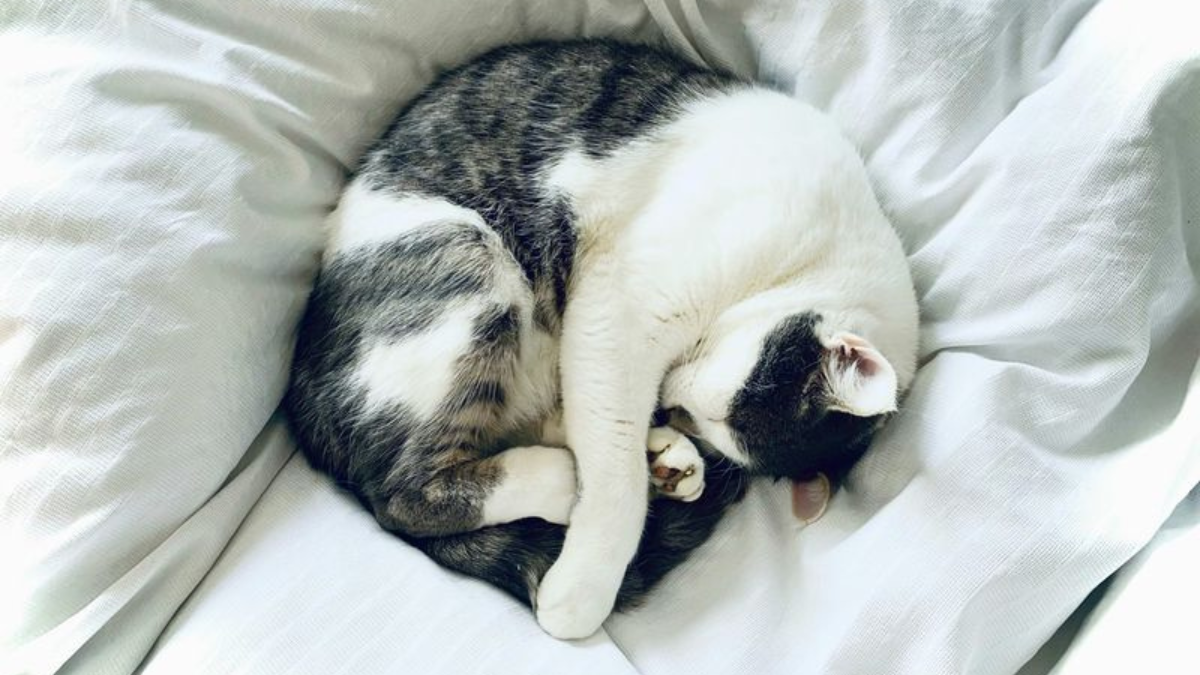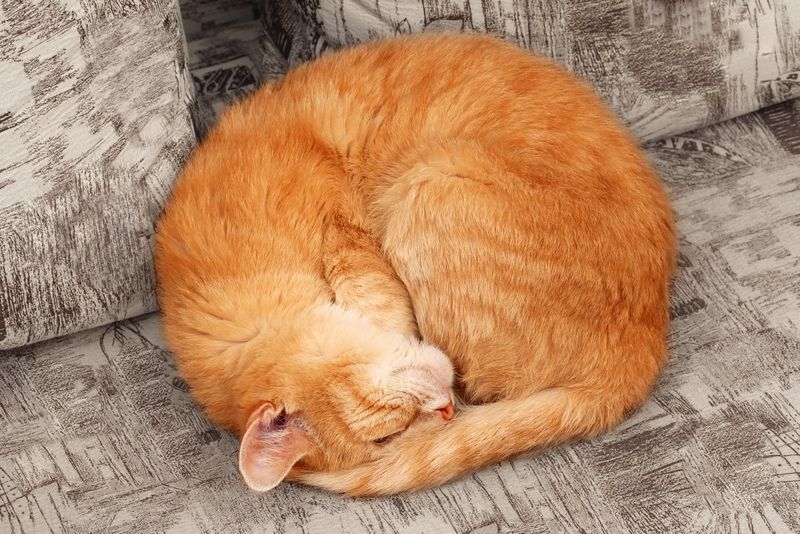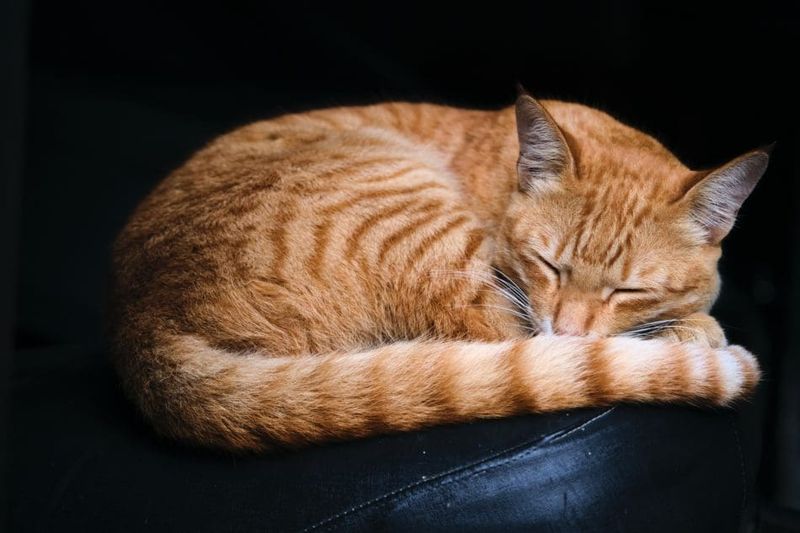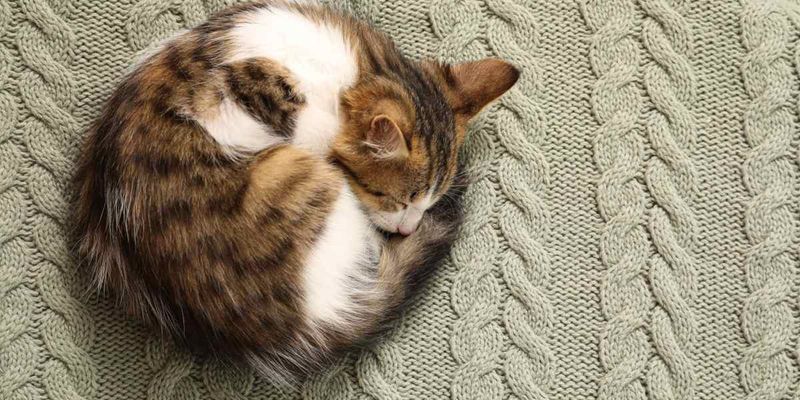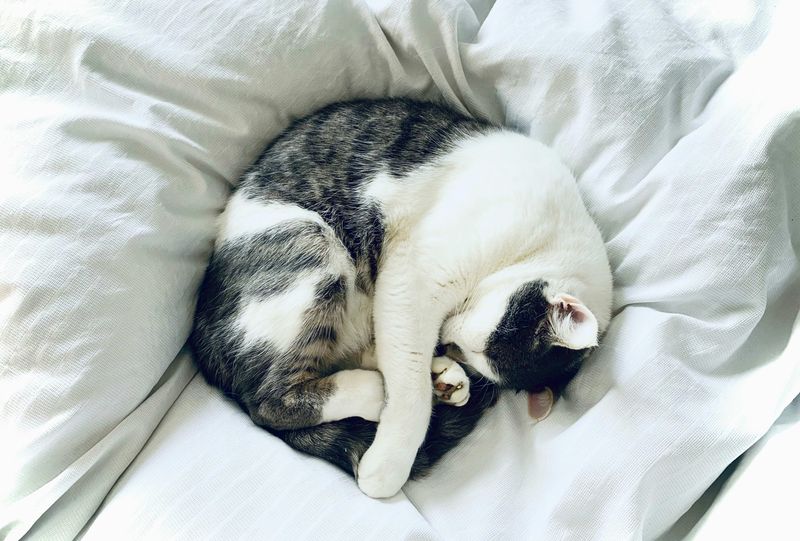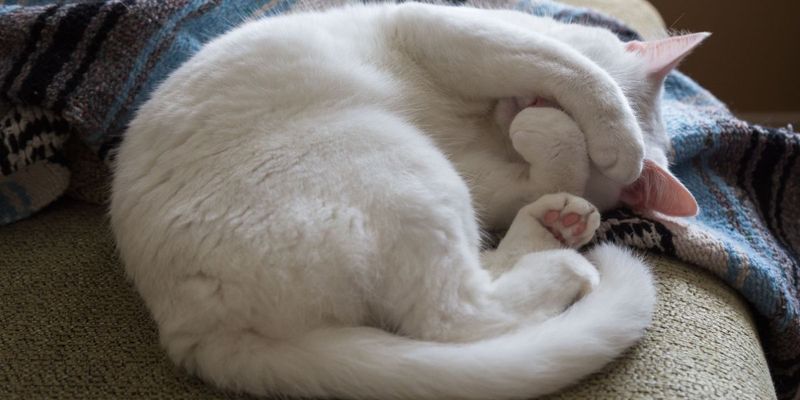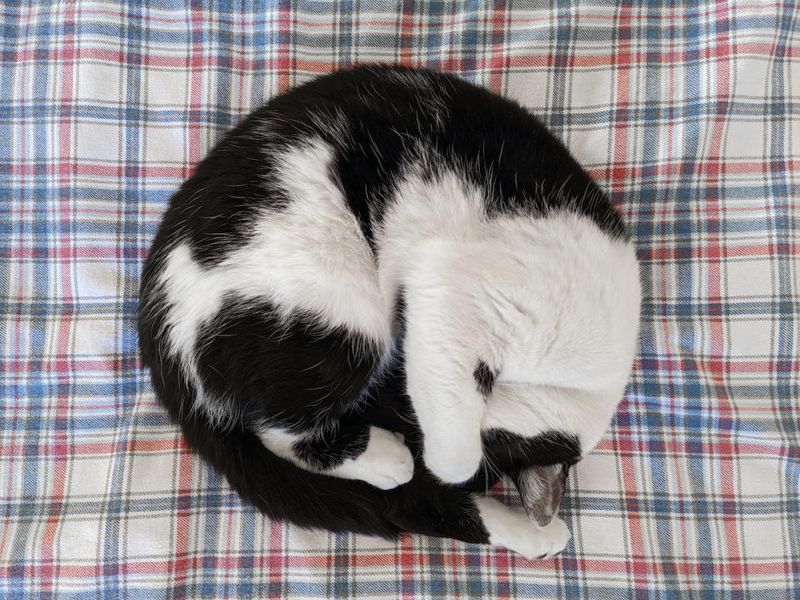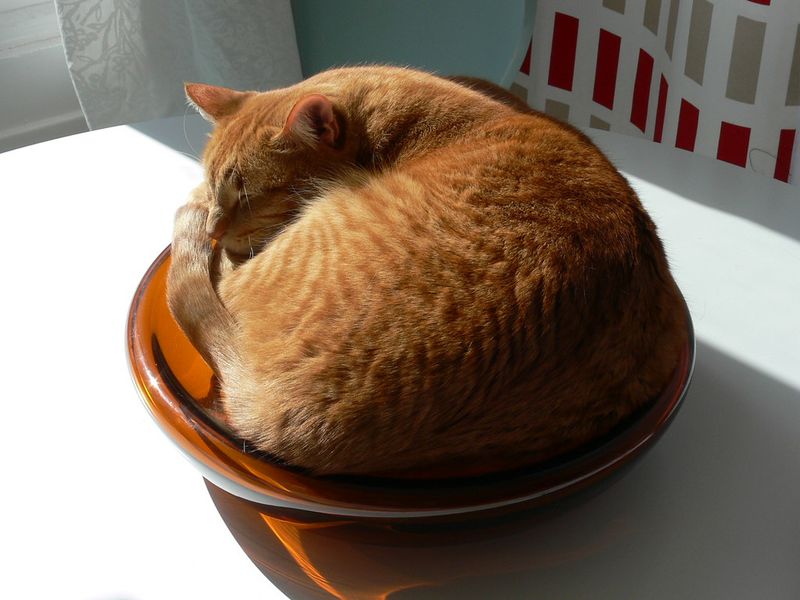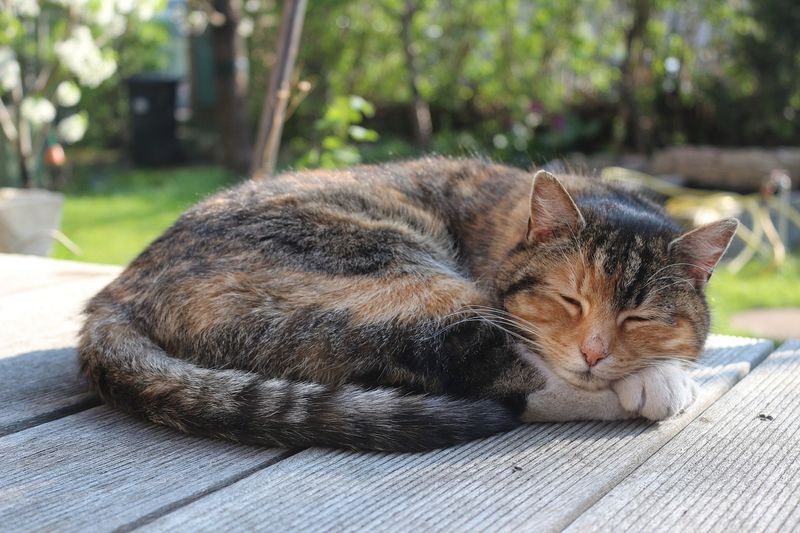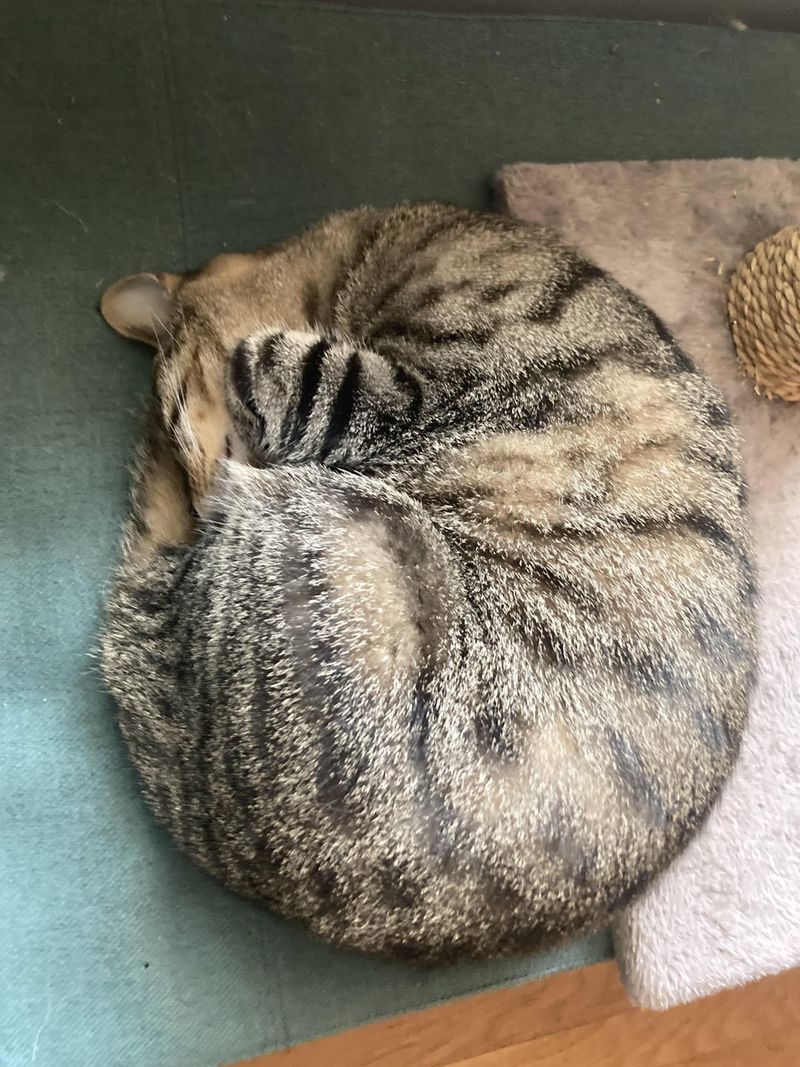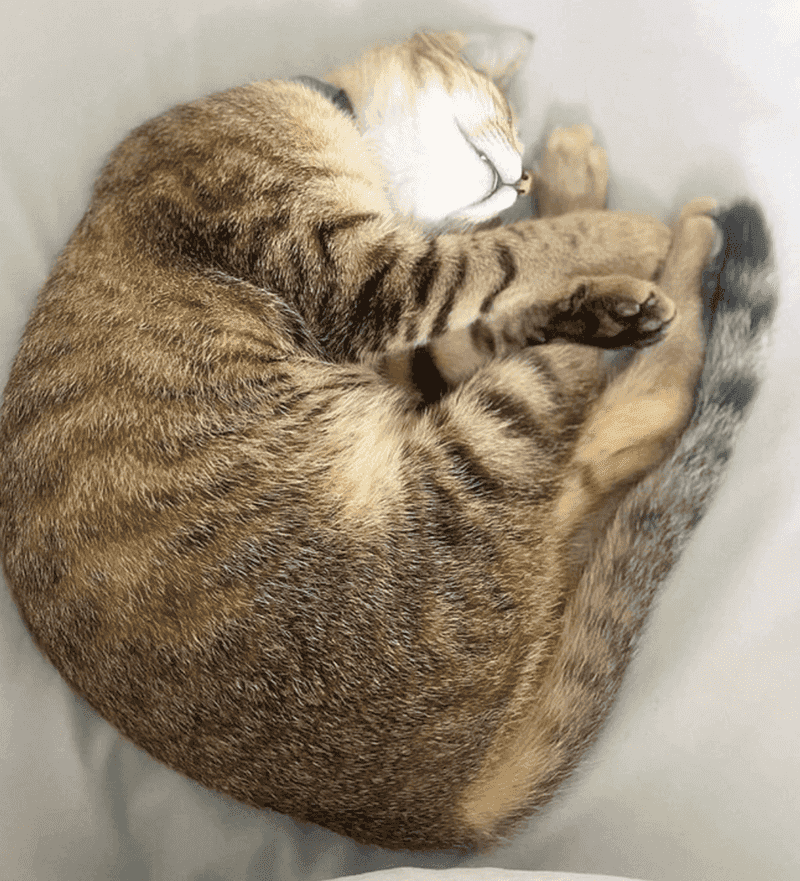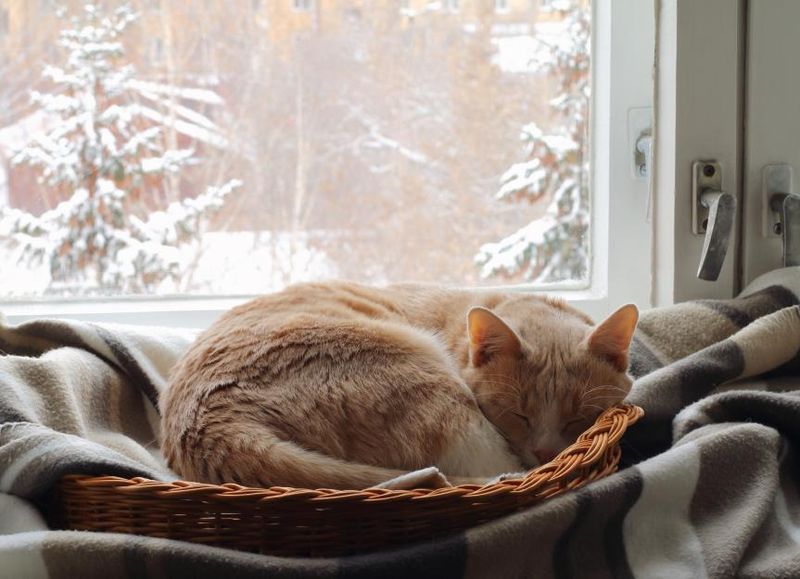📖 Table of Content:
Few sights are as endearing as a cat curled tightly into a neat, furry circle. This common sleeping position is seen across breeds and ages, often taking place during the many hours cats devote to rest each day. While it may appear to be just another cute habit, there’s more behind the behavior.
Curling into a ball offers physical benefits rooted in survival instincts. By tucking in their limbs and tails, cats conserve body heat and protect vulnerable organs while they sleep. This natural pose also helps them feel more secure, especially in unfamiliar or open environments.
Beyond the physical, this sleeping posture can reflect a cat’s emotional state. A tightly curled cat often signals a desire for comfort or a retreat from stress. Understanding these subtle cues offers insight into how cats manage both their bodies and their feelings while they rest.
1. Temperature Control Masters
Cats curl up to conserve body heat during colder weather. Their furry bodies create a natural insulation system when tucked into a ball, with their tails often wrapped around their bodies for extra warmth. This position minimizes the surface area exposed to the cold air.
Wild cats developed this survival technique thousands of years ago, and our domestic friends have maintained this instinct despite central heating.
The next time you see your cat in a tight ball during winter, know they’re using an ancient method to stay cozy. During summer, you might notice your cat stretching out instead to release heat rather than conserve it.
2. Protection From Predators
Survival instincts run deep in our domestic companions. When cats curl up, they’re protecting their most vulnerable body parts – the belly, chest, and vital organs – from potential threats. This defensive position comes from their wild ancestors who needed constant vigilance against predators.
Even in your safe home environment, these instincts remain active. The ball position allows cats to spring into action quickly if needed, as their muscles stay partially tensed even during rest.
Your cat’s brain is hardwired for self-preservation, explaining why even the most pampered house cat maintains this protective sleeping habit.
3. Comfort Seekers
With as many as 53 vertebrae, cats have far more flexible spines than humans, who have only 33. This unique anatomy makes curling up not only easy but extremely comfortable for them. Their bodies are naturally built to fold into this compact resting shape.
The ball position supports their spine in a way that relieves pressure points and allows for deep, restorative sleep. Many cat owners notice their pets purring contentedly while curled up, a clear sign of physical comfort.
Senior cats especially prefer this position as it eases joint pain and provides the support their aging bodies need during rest periods.
4. Security Blanket Effect
Much like a weighted blanket does for humans, the curled-up position offers cats emotional reassurance. The gentle pressure from their own body provides a calming sensation that helps reduce stress. It’s a natural way for them to feel protected and at ease.
Rescue cats or those with traumatic backgrounds often display this behavior more frequently. The self-soothing nature of curling up helps them cope with stress in new environments or during unsettling situations like thunderstorms or visits from strangers.
Many cat behaviorists recommend providing small, enclosed beds that support this natural position to help anxious cats feel more secure in their surroundings.
5. Nose-to-Tail Warmth
The nose and paw pads contain fewer fur coverings, making them particularly susceptible to cold. By tucking these exposed areas close to their fur-covered body, cats create a clever warming system. Their tail often serves as a built-in face mask, protecting sensitive nose tissue from cold air.
This position also warms the air they breathe before it enters their lungs. You might notice your cat adjusting their position throughout sleep to keep these sensitive areas covered as they shift.
Outdoor cats perfect this technique, sometimes completely covering their nose and paw pads when temperatures drop significantly.
6. Energy Conservation Strategy
Cats are natural energy savers, and the ball position helps them conserve precious calories. Despite being predators, their wild ancestors faced food scarcity and developed efficient resting positions to minimize energy expenditure between hunts.
Modern house cats maintain this evolutionary advantage. The tight curl reduces muscle activity during sleep, allowing for maximum energy conservation. This explains why your well-fed house cat still instinctively curls up after meals.
Research shows cats in this position have slightly lower metabolic rates than when stretched out, making it their preferred position during deeper sleep phases.
7. Muscle Recovery Position
Feline athletes need proper recovery after their impressive acrobatic feats. The curled position provides ideal conditions for muscle repair and growth during rest periods. By taking pressure off certain muscle groups, this position allows for improved blood circulation to tired tissues.
After intense play sessions, you might notice your cat immediately seeking a spot to curl up. This isn’t coincidental – their bodies instinctively know what position promotes fastest recovery.
The gentle stretching that occurs within the curled position also helps prevent muscle stiffness, ensuring your cat remains limber for their next play session or hunting adventure.
8. Memory Foam Mimicry
By curling into a ball, cats shape a sleeping position that molds perfectly to their own bodies. This posture reduces pressure on sensitive areas, making even hard or uneven surfaces feel comfortable. It’s a built-in strategy that allows them to rest anywhere with ease.
The weight distribution in this position creates a stable base that prevents rolling or falling during deep sleep cycles. Particularly on uneven surfaces, the curled position provides stability that other sleeping positions cannot match.
Your cat’s preference for certain sleeping spots often relates to how well that area supports their natural curled position.
9. Social Bonding Signal
Curling up near you represents a profound display of trust and affection. When cats sleep in this vulnerable position in your presence, they’re communicating complete comfort with you as their protector. This behavior strengthens the human-cat bond through shared vulnerability.
Multi-cat households often feature felines curled up together, sharing warmth and reinforcing their social connections. This mutual curling creates a bonding experience that strengthens their relationships.
The next time your cat chooses to curl up against you or another pet, recognize it as a significant social gesture that demonstrates their trust and desire for connection.
10. Scent Preservation Technique
Cats possess scent glands throughout their bodies that leave their unique signature on surfaces they touch. The ball position minimizes the spread of their scent when in unfamiliar or potentially threatening environments. This natural camouflage technique reduces their detectability to potential threats.
Feral cats frequently utilize this position when resting in exposed areas. By containing their scent, they avoid attracting unwanted attention from predators or competing cats.
Newly adopted cats often maintain tight ball positions until they feel secure enough to mark their territory, showing how this position relates to their sense of security and territorial confidence.
11. Weather Prediction System
Many pet owners report their cats curl more tightly before weather changes. This fascinating behavior connects to their highly sensitive inner ears and ability to detect barometric pressure fluctuations. The tighter curl helps stabilize their balance system during these atmospheric shifts.
Studies suggest cats may curl up more persistently before storms or significant weather events. Their whiskers also function as sensitive weather detectors, which they protect by tucking them close to their bodies in the ball position.
Next time your typically stretched-out sleeper suddenly prefers the tight ball position, check the weather forecast – your feline friend might be giving you an early warning system!
